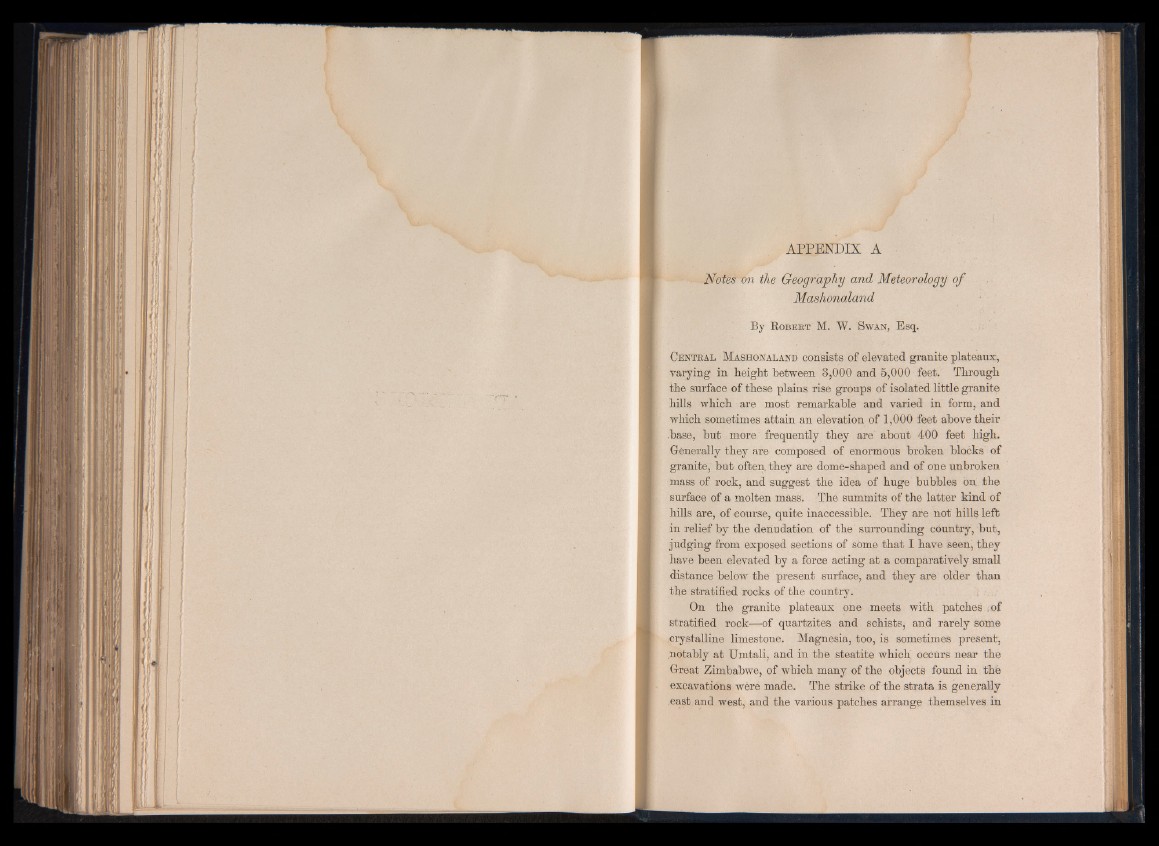
APPENDIX A
Notes vn the Geography and Meteorology of
Mashonaland
By R o b e k t M. W. S w a n , Esq.
C e n t r a l M a sh o n a la n d consists of elevated granite plateaux,
varying in height between 3,000 and 5,000 feet. Through
the surface of these plains rise groups of isolated little granite
hills which are most remarkable and varied in form, and
which sometimes attain an elevation of 1,000 feet above their
base, but more frequently they are about 400 feet high.
Generally they are composed of enormous broken blocks of
granite, but often, they are dome-shaped and of one unbroken
mass of rock, and suggest the idea of huge bubbles on the
surface of a molten mass. The summits of the latter kind of
hills are, of course, quite inaccessible. They are not hills left
in relief by the denudation of the surrounding country, but,
judging from exposed sections of some that I have seen, they
have been elevated by a force acting at a comparatively small
distance below the present surface, and they are older than
the stratified rocks of the country.
On the granite plateaux one meets with patches ;of
stratified rock—of quartzites and schists, and rarely some
crystalline limestone. Magnesia, too, is sometimes preseint,
notably at Umtali, and in the steatite which occurs near the
Great Zimbabwe, of which many of the objects found in the
excavations were made. The strike of the strata is generally
east and west, and the various patches arrange themselves in